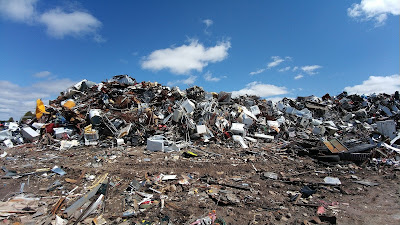Education gives us knowledge of the world around us. It is important to educate our children for their better upbringing in a way that can educate them valuable lessons about how to live a sustainable life.
Teaching children to care for the environment is an essential part on how to become a good citizen. It is often said that home is the first school and parents are the best teachers for a child. Once children learn to recycle at home, they can share their experiences with their classmates on sorting recyclables at school or at their sports clubs. Also, metal recycling companies in Dubai have several such recycling campaigns for children that care for their present and future.
These days, teachers in school are playing a key role in educating children about recycling and how to reduce waste. Recycling and waste disposal exhibitions, outdoor campaigns, class activities, short movies and many other fun activities and tools are being used by teachers to help their students to know the value of money and how to protect our environment.
There are various activities for children that can be undertaken to educate them about recycling and its importance to our eco-system. Following are the most common activities that can be carried out in school:
• Conduct recycling workshops and campaigns on ways to recycle.
• Arrange health and hygiene days to let them know the importance of a healthy lifestyle.
• Place bins for each recyclable item.
• Encourage them to bring reusable bottles that can be refilled instead of using single-use plastic bottles.
• Introduce activities with recycled materials.
• Take them to library to read books on green living or show them short movies on sustainable topics.
• Encourage students to plant trees for greener world at their schools and homes.
• Discourage printing of papers and switch to electronic paper.
• Organize a team including teachers and students who can monitor the waste free environment within the school premises.
• Encourage art lover students to use recycled items for their projects.
• Arrange field trip for students to visit metal recycling companies like Lucky Recycling to understand how the different type of metals get sorted at Dubai scrap yards.
• Organize “Zero Waste Day” at their schools.
Photo Reference: Lucky Group archives
Teaching children to care for the environment is an essential part on how to become a good citizen. It is often said that home is the first school and parents are the best teachers for a child. Once children learn to recycle at home, they can share their experiences with their classmates on sorting recyclables at school or at their sports clubs. Also, metal recycling companies in Dubai have several such recycling campaigns for children that care for their present and future.
These days, teachers in school are playing a key role in educating children about recycling and how to reduce waste. Recycling and waste disposal exhibitions, outdoor campaigns, class activities, short movies and many other fun activities and tools are being used by teachers to help their students to know the value of money and how to protect our environment.
There are various activities for children that can be undertaken to educate them about recycling and its importance to our eco-system. Following are the most common activities that can be carried out in school:
• Conduct recycling workshops and campaigns on ways to recycle.
• Arrange health and hygiene days to let them know the importance of a healthy lifestyle.
• Place bins for each recyclable item.
• Encourage them to bring reusable bottles that can be refilled instead of using single-use plastic bottles.
• Introduce activities with recycled materials.
• Take them to library to read books on green living or show them short movies on sustainable topics.
• Encourage students to plant trees for greener world at their schools and homes.
• Discourage printing of papers and switch to electronic paper.
• Organize a team including teachers and students who can monitor the waste free environment within the school premises.
• Encourage art lover students to use recycled items for their projects.
• Arrange field trip for students to visit metal recycling companies like Lucky Recycling to understand how the different type of metals get sorted at Dubai scrap yards.
• Organize “Zero Waste Day” at their schools.
Photo Reference: Lucky Group archives







